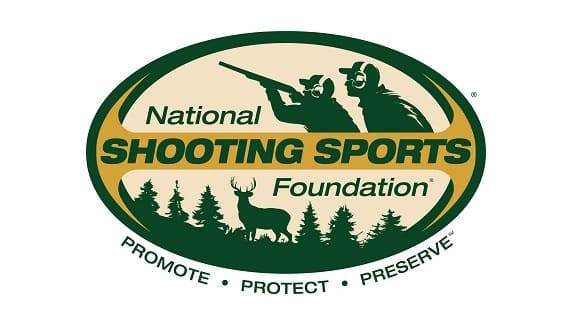In Ten Years, NSSF Has Awarded $4.7 Million to State Agencies to Promote Hunting
National Shooting Sports Foundation 03.12.12

The National Shooting Sports Foundation has in ten years awarded $4.7 million in grants to 40 state wildlife agencies to fund projects providing novice and experienced hunters with more opportunities to go afield and new resources to plan hunts. Some 121 grants have been awarded over the past decade, including some to regional wildlife agencies.
NSSF, the trade association for the firearms, ammunition, hunting and shooting sports industry, launched the Hunting Heritage Partnership grants in 2003 to help state agencies respond to the growing number of barriers to hunting, including loss of access to hunting land due to urbanization and the fragmentation of many hunters’ social networks.
States were encouraged to design and submit programs to meet these and other challenges. The result is that they have chalked up a number of successes, ranging from increasing access to public and private lands to improving online resources by providing maps with GPS coordinates to mentoring programs to marketing efforts using traditional and social media outlets. Many states have shared these “models of success,” saving time and funding by focusing on strategies with records of accomplishment.
“Some programs have been more successful than others, but overall NSSF is very pleased with what has been accomplished in ten years,” said Melissa Schilling, NSSF’s director of recruitment and retention initiatives. “More and better hunting opportunities exist today thanks to these efforts.”
Among this year’s awards are first-time grant recipients Utah and North Dakota. Minnesota’s Department of Natural Resources received grants for two different programs.
This year’s 12 Hunting Heritage Partnership grant recipients:
- Hawaii Department of Land & Natural Resources–$35,000
Project: Increase hunting opportunities by providing new public access to the Ka’u Forest Reserve, one of the largest forested reserves in the state, comprising more than 60,000 acres.
- Minnesota Department of Natural Resources–$5,000 and $10,000
Project A: “I buy what looks like me” is a quote from research on effective programs and matching instructor-participant backgrounds. Consequently, this project will allow DNR to acquire photographs of females who hunt for use in publications. Project B: An effort to help Minnesota maximize the number of youth introduced to turkey hunting, including updating a radio public service announcement and email campaign to more than 6,000 past turkey license holders to encourage them to take youth turkey hunting.
- Texas Parks and Wildlife Department–$34,000
Project: Provide mentored hunting and shooting opportunities. Educational events will attract new and inactive hunters of all ages, gender and backgrounds.
- Mississippi Department of Wildlife, Fisheries and Parks–$15,120
Project: Recruitment of small-game hunters is important if the trend of declining hunters is to be reversed since hunting small game is a stepping stone to other types of hunting. This project will identify and expose new youth hunters to small-game hunting and then provide the next steps to youth and their parents regarding public hunting opportunities.
- Wyoming Game & Fish Department–$30,000
Project: To assist the department’s Private Lands Public Wildlife Access program in reaching its goal of more access to private land and landlocked public lands for hunting by enrolling private landowners into either a Walk-in Hunting or Hunter Management Area program. The project will also have a public relations component to maximize participation by the sporting public.
- Michigan Department of Natural Resources–$48,000
Project: This new program will introduce a new group of potential hunters (young professionals) to hunting and wildlife conservation through the tasting of wild game and, finally, mentorship through hunting activities.
- Virginia Department of Game & Inland Fisheries–$48,750
Project: This project will launch a pilot marketing campaign and build on previous outreach campaign efforts to determine the most effective images, methods and modes of delivery for reaching lapsed hunters to improve state fish and wildlife agencies’ return on marketing investment.
- Florida Fish & Wildlife Conservation Commission–$19,000
Project: Armed with a better understanding of why individuals use the Florida Hunter Safety Mentoring Exemption, this project will encourage those under 16 to invite a friend to complete hunter safety training, purchase a hunting license and take an active role in hunting. Tactics include using videos highlighting where and how to hunt in Florida, enhancements to the new I Hunt Florida website and the use of social media to attract youth hunters to the site.
- Utah Division of Wildlife Resources–$42,315
Project: A new program to recruit and retain new hunter-education graduates as hunters through a “step” program.
- Georgia Department of Natural Resources–$65,000
Project: The focus of this multi-state effort involving Georgia, Kentucky and Alabama will be promoting and providing the next steps to create lifelong hunters, a follow-up to last year’s assessment of the rate at which hunter education graduates go on to purchase hunting licenses and actively participate.
- North Dakota Game and Fish Department–$40,000
Project: Conduct study to better understand the rates at which various types of audiences approve of hunting and shooting and what new technology is most effective for delivering hunting and shooting messages.

